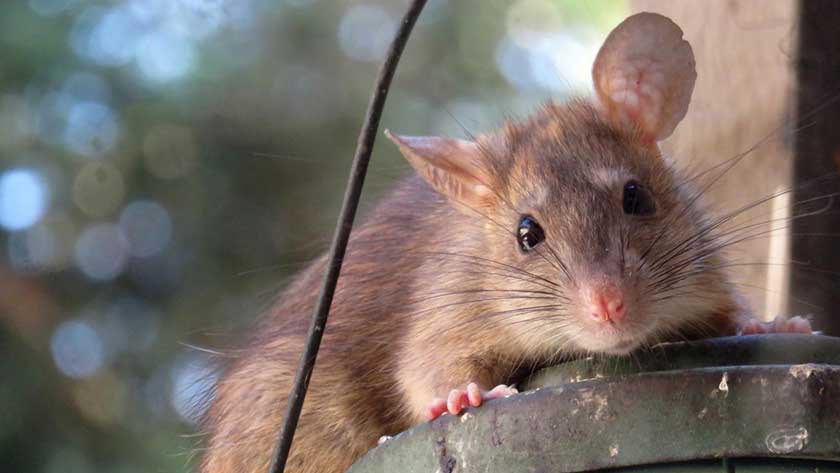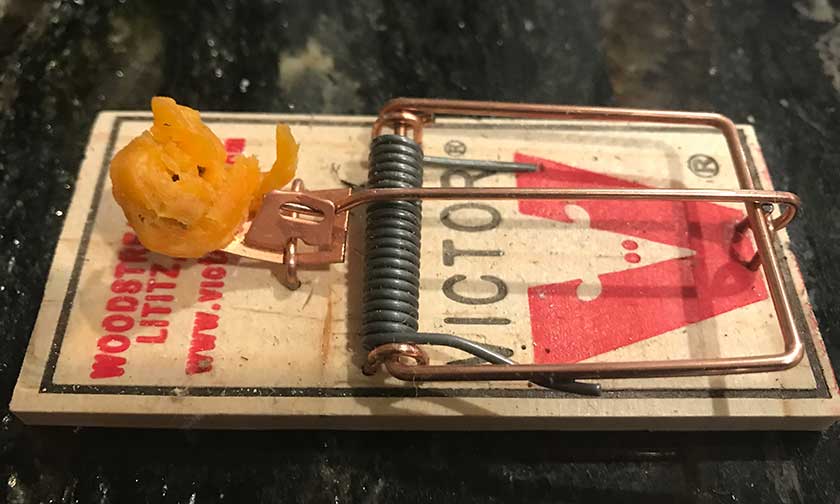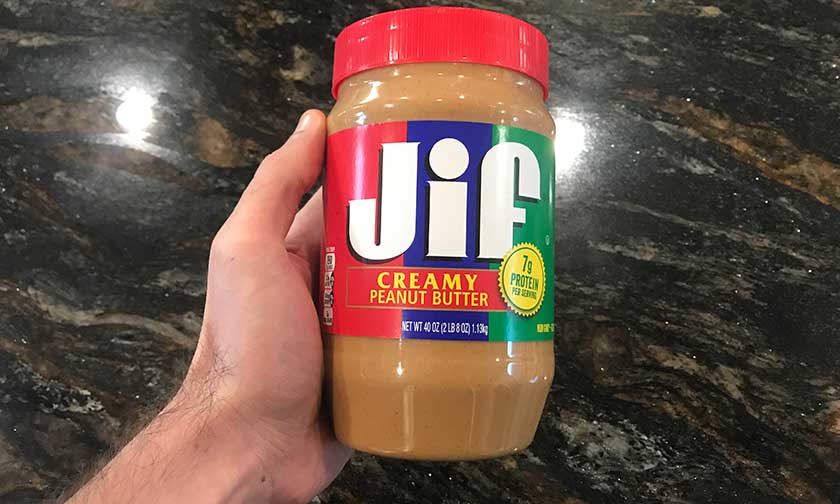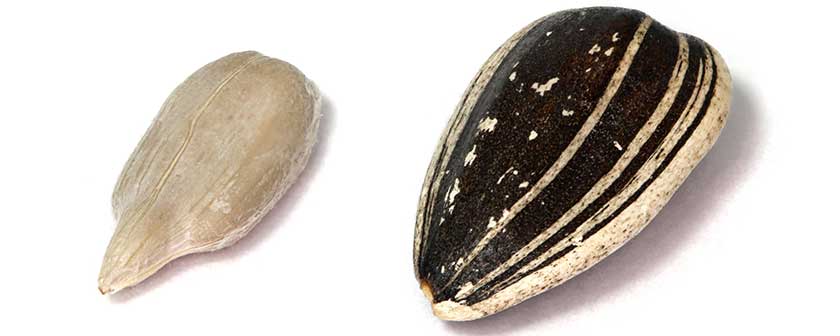If there is a pest that has literally plagued the human race for thousands of years, it is rats. Here in the 21st Century, we are still beset by the rat menace. Rats leave droppings, chew furniture, carry disease, steal food, and more. No bones about it, rats are pests.
We’re all about pest solutions here at Pest Control Gurus, and today we discuss the rat, a fascinating little creature that we prefer to keep out of our homes and places of business.

In particular, we will be focusing on the invaluable workhorse of pest traps everywhere: The bait! If you still need to find a good trap, check out our favorite rat traps here.
Trapping is a kind of ongoing science, with different pests requiring different solutions. In fact, one of the trickiest parts about this whole business is that different communities of same-species pests react uniquely to pest control efforts. In other words, one rat infestation isn’t quite the same as the next. If peanut butter is an effective lure to your rat infestation, the rats down the street may be peanut butter snobs, preferring only to snack on salty seeds.
This is a tough one because there’s not necessarily a straight answer. Sort of like asking, What’s the best people food? It depends on the person. That being said, rat palettes are a tad less refined than ours, so there is a bit more commonality amongst their individual taste buds. Plus, rats living in the wild are working to survive, which means that unless your bait is particularly offensive to them, they might just snag it anyway.
Here is our list of baits commonly used, their effectiveness at luring rats, and how to employ them for maximum rat-catching power.
Here are the Best Rat Trap Baits
1. Cheese (See Pro Tip)

Are you surprised to see this one on the list? Cheese and rats go together like peanut butter and jelly – incidentally, those latter two can also be used for bait. But as for cheese, what you’re looking for is something smelly and flavorful. It is bait after all, so that odor needs to lure those unsuspecting critters right into your trap.
One thing you will notice after watching a bit of rat trapping footage is that if the rats can quickly retrieve their food prize, they’ll hustle on back to a hiding spot and add it to their cache for future eating. One of the nice things about cheese is that larger pieces cannot be simply hauled away. They also can’t be digested instantly. You might find little gnaw marks on your cheese bait, indicating that the rats simply got their fill and took off. But if your trap is arranged such that the rat will pull on the trigger by chewing the cheese, you’re in business.
Pro Tip: Stealing cheese from a rat trap is childs play for a rat. They will simply take the cheese and run back to their favorite hiding place in your home, laughing at you along the way. To prevent this from happening slightly melt the cheese (to a point where it’s very soft but still a solid) and place it all around the catch on the trap. If you do this, you will be waking up to the SNAP sound of traps instead of nightmares of your rat infestation.
Related Article: 17 Best Ways to Get Rid of Rats
2. Peanut Butter (See Pro Tips)

Peanut butter is one of the best baits for rat traps for a number of reaons. It is sticky, sweet, pungent, and of all the rat baits we recommend, it seems to hold special sway over the stomach of a rat. Rats love peanut butter, and if you let them, they will race to lick a peanut-buttery surface clean. However, while the creamy nature of peanut butter will consistently draw rodent attention, it is missing one of the key components in functional baiting material.
How are you supposed to glue peanut butter down? You can glue down seeds (another great bait) and other more concrete snacks, but a trap that can be carefully licked clean of its bait is hardly lethal.
Pro Tip: We recommend the peanut butter supplementation method – use a little peanut butter with another bait (using peanut butter to glue down seeds is great) and watch your traps fill up like it’s raining rodents.
Pro Tip 2: Reese’s are sometimes mentioned as a perfect combination of chocolate and peanut butter, but with the aromatic peanut butter sitting inside its chocolate fortress, you’re mainly looking at chocolate as a lure. While this can work, it fails to capitalize on peanut butter’s allure, which can only do its work when out in the air.
You can cut a Reese’s peanut butter cup in half, but you’re probably better off using the stuff from a jar. That’s the bait rats really seem to crave.
3. Seeds (See Pro Tip)

Seeds may be for the birds, but that doesn’t mean a rat will turn them down. Sunflower seeds are a popular choice among rat trappers. They are often used as baiting tests to determine whether a pest problem actually exists. Leave some delicious, extra-salty sunflower seeds all over your floor overnight. In the morning, if the seeds have been disturbed or removed entirely, you are looking at a pest problem. It probably wasn’t your weird seed-eating cousin, but she is kind of a pest, isn’t she?
Seriously, seeds are very enticing to most rats, generally more so than the first two baits on this list. Of course, seeds are small and easily removed, meaning that a rat can snag those seeds and leave before the trap has a fighting chance to go off.
Pro Tip: The solution? Glue the seeds down. First, try placing a small series of unglued seeds leading to the most dangerous part of the trap. On the dangerous part, where a rat is most likely to trigger the trap, glue an enticing pile of tasty seeds so that the rat can tug on them. You know what happens next.
One downside to seeds, however, is the odor. They just don’t smell as strongly as some other baits, meaning that seed-baited traps might take longer to produce results. Your rats have to find them first.
4. Tootsie Rolls
Who doesn’t love these chewy American staples of sugary delight? Rats like chocolate, which is one of the founding ingredients in a tootsie roll. This bait is a bit like cheese in that it provides much to gnaw on. Roll your tootsie bait into a sticky ball and give those rats something to work over for a long time. The more time they spend trying to get bait off the trap catch, the more likely it is to trigger.
Of course, if a rat can find any way to get some of the roll without endangering itself, you can bet that this is exactly what it will do. Arrange your traps with tootsie roll bait that cannot be easily removed. Glue can accomplish this nicely, and the efforts that a rat puts into gnawing the tootsie roll are likely to trigger the trap.
But cheese and tootsie rolls are also similar in this respect: This candy is probably not a rat’s all-time favorite food.
5. Bacon (See Pro Tip)
Bacon is at times irresistible, and readers may have even braved danger just to retrieve it. A rat will smell that meat from a distance and get very curious. This bait isn’t too different from some of the previously mentioned options.
Pro Tip: It can be glued down to keep nibbling rats in place until the trap springs, but it is more costly than the other items on the list.
It must also be noted that the meat can eventually go bad, making trap preparation and reloading more involved if the rats don’t go for the bacon right away.
Related Article: 10 Best Rat Traps
Rats are Smart
Rats are living examples of the old adage, Size isn’t everything. Their brains may be small, but rats are not at a loss for cleverness, reflex, survival skills, and defensive scavenging prowess. In fact, for decades, rats have been successfully used to power psychological theory by acting as our very own… Well, lab rats!
Rat brains are remarkably similar to ours in some key ways. Okay, you won’t get outscored by a rat on a math test. However, the reward and pleasure centers in their brains are wired so closely to our own neural networks that we can reliably figure out all kinds of things about human behavior just by looking at what a rat does when you offer it a reward.
Traps and baiting are all about rewards. The rat wants its reward, but it will evaluate its prospects as it approaches your trap setup. Rats feel instinctively that unknowns are dangerous. If that little critter can get his treat without placing himself in an unknown situation, he will dodge your trap and get his treat too. Or at least as much of it as he can safely snatch.
Bait smart by understanding the rat. If they must pursue maximum danger in order to get what they need (the bait), they just might take a walk on the wild side. Their mistake.
Without further ado, let’s make like rats and dig right into trap bait.
Rat Trap Types
Bait, of course, is only the first step. You can lure rats all day, but the trap is your endgame. While this article is mainly a bait feature, here are a couple modern trap variants that boast a scarily effective history of rodenticide, though they can be used in a non-lethal capacity as the trapper prefers.
The Plank Rat Trap
This pirate-themed trap is pretty much what it sounds like. Rat ascends ramp, rat sees bait, rat works up courage to walk adjoining plank, rat takes a dip in the pool below. This trap functions well with a garbage bin or similar container, although you don’t actually have to fill it with water. If you prefer, the trap can serve as a catch-and-release for those who feel squeamish about pest killing.
You can drill a rat-sized hole in the side of a bin, and the rest, including ramp and adjustable plank, can be purchased separately. The hole in the bin is for the rat to enter, forcing them onto the narrow plank if they are determined to snatch the bait. The plank is designed to flip abruptly downward, causing the rat to plummet to the bottom of the bin.
Glue some seeds/peanut butter/chocolate to the tip of the plank and you’re all set.
The Rolling Log Rat Trap
This trap is distinct from the plank, although the two are kindred spirits. Like the plank, this trap entices rats to approach danger with a false stability that becomes treacherous after it is too late.
Place the roller bar across the top of a fitted bucket and affix a little bait to the bar’s center. The bar is long enough that a rat must venture beyond the bucket rim to the center of the bar for their little prize. Once the rat reaches the center of the bar, this becomes a circus act for which the rat is probably not trained, causing the rodent to lose its grip on the abruptly rolling bar.
This trap is approximately as effective as the plank, and it features the same capacity for non-lethal trapping. Drop the rats into an empty bucket and release them in a remote location later.
Rat Trap Summary
I hope this guide helped you a ton! If you want, you can check out our full guide on how to get rid of rats here.
Let’s go over our bait & trap lesson. Cheese and tootsie rolls can work, but they aren’t always the most alluring as bait goes. Meat, particularly the pungent bacon, is not a bad choice. However, meat can spoil and may not be alluring for long.
Seeds are definitely a rat favorite, but as bait, they lack an aroma for best luring results. The key is peanut butter, which can be slathered onto most other types of bait. That way, rats are lured in and spend more time on the food overall. Glue some bait down, apply peanut butter, set the trap, and watch the critters roll in.
Sometimes they will literally roll right into the bucket, as in the case of the rolling log trap. Alternatively, there is the plank, which dupes rats onto a deceptively unstable platform before dumping them into the receptacle of your choice.
Ultimately, these factors can be mixed and matched until you find just the right answer to your particular pest problem. If one trap isn’t cutting it, or a certain bait isn’t doing its job, don’t worry! There is a solution out there for your infestation, so keep running down your list of options until you land on something those rats can’t resist.
Until next time, happy trapping!
Related Article: How to Get Rid of Chipmunks
My name is Blane and I’m a life-long resident of Southeastern Louisiana. I’ve been working as Pest Control Technician and Inspector for about 1.5 years now.
I’ve worked in many other industries as well, including consulting, managing, as well as at the ground level in fields including Food Service, Corporate Automotive sales, and finance. Whether it be providing counsel, content, or hands-on support; my goal remains to add value to the lives of the people I serve.
If you have any questions regarding pest control, leave them below. I would be happy to help you out in any way I can.
